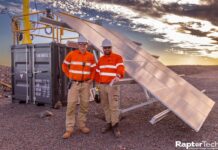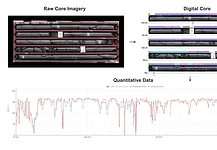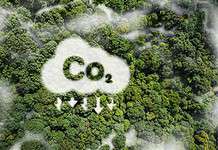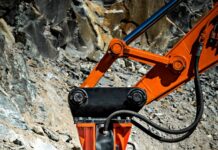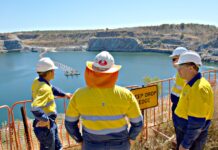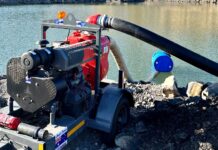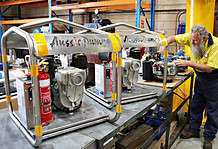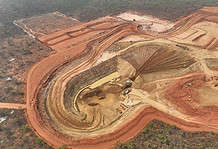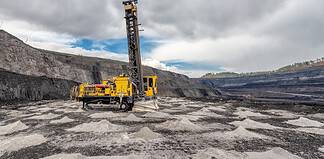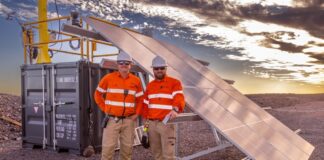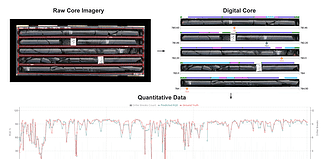Kwinana Industries Council director Chris Oughton. Image: KIC.
BY REUBEN ADAMS
TIANQI’S decision to establish a lithium downstream processing facility at the Kwinana Industrial Area (KIA) was a watershed moment. It not only flagged a new wave of growth for the KIA, it was synonymous with a broader step change for WA’s resources sector – from ‘dig and deliver’ into value-added processing.
The Kwinana Industrial Area is the heart of the Western Trade Coast (WTC), WA’s premier industrial area which pumps about $15 billion into the State economy each year. The KIA could see its current $11 billion per annum contribution to the WA economy skyrocket as this push toward secondary processing and battery manufacturing gains momentum.
In August 2017, BHP Nickel West announced construction of world’s largest nickel sulphate plant at its site in the KIA –100,000 tonnes per annum, with a potential Stage 2 expansion to 200,000tpa –for use in the battery market.
Then came the seminal moment – Tianqi Lithium’s commitment to the $400 million construction of a processing facility in Kwinana, with Stage 1 of the project expected to be completed in mid-2018.
In May this year WA Lithium – 50/50 joint venture between Sociedad Química y Minera de Chile and Kidman Resources – inked a deal to proceed with its own Kwinana lithium refinery.
Then in June, MinRes and Hazer finalised the first stage of concept design for a proposed graphite pilot plant, also at Kwinana.
Kwinana Industrial Area
The Kwinana Industries Council (KIC) is a business association advocating on behalf of its membership, drawn from the Kwinana Industrial Area (KIA).
Passionate, long serving KIC director Chris Oughton said this development period, and the potential for further explosive growth, was in a league of its own.
Until now, his almost-12 year tenure at KIC had been predominantly characterised by member companies “hunkering down” and facing the financial challenges of staying in business during an economic downturn.
“From 2007 things were humming along quite nicely but there were no new entrants, and hadn’t been for quite some time,” he said.
“Then, of course, the Global Financial Crisis impacted industry, and then the companies in the industrial area were focused on survival.
“There were some near misses, let’s say, but they are all here today.”
KIC focuses on key strategic issues that impact the businesses in the KIA, including road access, rail access, port access, governance, and trying to get rid of inefficiencies associated with “red rope”.
“We don’t fight red tape, we fight red rope down here; gnarly, twisted, stainless steel wire-reinforced, horrible stuff,” Mr Oughton said.
For KIC and the KIA, there are two large, interconnected issues at play.
Firstly, this new wave of interest in WA, and particularly the KIA, as a hub for battery metals processing; and secondly, the advent of the State Government-led Westport, and the potential development of a long-debated outer harbour at Kwinana.
For Mr Oughton, this is a policy area ubiquitous with “red rope”.
Outer Harbour Development
Mr Oughton has been advocating for an outer harbour development for more than a decade, but this time he was confident the ducks were lining up.
With the election of the McGowan Government last year came another promise of the planning and construction of an outer harbour container and bulks port.
In September, the Westport Taskforce was established to develop a long-term integrated solution to meet the freight, logistics and trade needs of Perth and the surrounding regions.
“If there is a new outer port built in Kwinana that resolves all of our key strategic issues,” Mr Oughton said.
“This is why I am extremely focused on contributing to that [Westport] process. And I must say, as a contributor to that process – I sit on eight of the work streams, five of them active – the Government are listening to what we are saying, to their credit.”
The companies moving into the KIA, such as Tianqi and WA Lithium, are choosing this location because it is the best for their business.
This only adds impetus to the outer harbour argument, which is about opening up the export potential of the State.
Without it, future growth will be held back through inefficiencies and lost opportunities directly related to transport and logistics, as well as local production and export, Mr Oughton said.
“The base of the argument now for those against the outer harbour is that the inner harbour can work for the next 25 to 30 years. That is a true statement, and it is an efficient competitive port relative to Australian ports,” he said.
What Mr Oughton is saying – what many are saying – is that capacity or competiveness is actually not the argument; it’s about opening up the State’s export potential.
“An efficient, internationally competitive port on the edge of Cockburn Sound opens up the export potential of the State,” he said.
“These markets to the north of Australia are massive, but we don’t think in a large enough scale. All we think about is exporting in bulk ships.
“I don’t see any difference in shipload of iron ore and livestock or grain. It is secondary processing opportunity being exported.
“A shipload of lithium rock spodumene is exported for about $80/t. if it’s processed into lithium hydroxide here it’s a little in excess of $20,000/t.
“But that’s just the price of it; you can imagine what that does to our State’s balance of trade.” And it’s a good four or five times the employment and growth in the service belt around the area. The multipliers go out into the State economy.”
Industrial Symbiosis
The KIA is already well placed to cater for new entrants, as an example of the world’s best practice industrial symbiosis at work.
The interdependency of Kwinana industries helps provide cost and environmental benefits beyond what is achieved by widely dispersed industries, Mr Oughton said.
“There’s 150 synergies operating as we speak – commercial relationships between members, made on commercial terms,” he said.
For Tianqi, neighbouring KIA business Coogee Chemicals is providing it with a product it manufactures already as part of the business.
Now, Coogee will increase production to supply Tianqi, and presumably WA Lithium once it is up and running.
It’s a synergy that makes Coogee Chemicals stronger and provides Tianqi with a lower cost inputs.
What also attracts these companies to KIA is the qualified staff and highly skilled service companies surrounding the heavy industrial core.
“It is common practice that the existing process plant operators, scientists, engineers, advanced tradies who populate the industrial area—30,000 of them – move from company to company,” Mr Oughton said.
“So there is a local, highly skilled workforce ready to be employed. We also have a belt surrounding the core of advanced fabricators and maintainers, engineering companies.”
AMEC’s The Path Forward report, released May 2018, stated that without Government and industry collaboration, Australia would capture just $10 billion of the total value of the battery supply chain in the next eight years. However, if one more step was taken down the value chain into electro-chemical processing, by 2025 Australia could have a share of a further $297 billion.
The additional synergies of co-locating battery mineral processing facilities in a single battery processing hub at the KIA are considerable, Mr Oughton said.
“We have Tesla out their spruiking WA as the lithium centre of the world,” he said.
“If this new industrial wave passes us by and go somewhere else – If that happens and the reason for it was that we weren’t ready, how dumb are we?”



